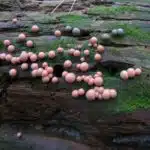As a horticulturalist, one of the most frequently asked questions I receive is how to get hydrangeas to turn pink or blue. Hydrangeas are beloved for their large, showy blooms and come in a variety of colors including pink, blue, white, and purple. However, the color of hydrangea blooms can be influenced by various factors such as soil pH and aluminum availability.
For those seeking to achieve a specific color for their hydrangeas, understanding these factors is crucial. In this article, we will explore the science behind what causes hydrangeas to turn pink or blue and provide practical tips on how to adjust soil pH and aluminum levels to achieve your desired hue. Whether you’re a seasoned gardener or just starting out, our guide will equip you with the knowledge and tools necessary to successfully grow beautiful pink or blue hydrangeas.
Understanding Hydrangea Coloration
Hydrangeas are well-known for their stunningly vibrant colors. The most common flower colors include pink, blue, purple, and white. Interestingly, the color of a hydrangea is not fixed and can change over time. This is because the color genetics of hydrangeas is complex and affected by various environmental factors.
The primary factor that determines the color of a hydrangea is the presence or absence of anthocyanin pigments in its petals. These pigments are responsible for producing red, blue, and purple hues in the flowers. When anthocyanin levels are low, hydrangeas appear white or light-colored. However, when anthocyanin levels are high, they produce deeper hues of pink or blue.
The flower color change over time is influenced by several factors such as sunlight exposure, temperature changes, soil pH level, and other environmental factors. For instance, hot temperatures tend to reduce the intensity of blue pigment production leading to pinkish blooms while cooler temperatures enhance blue pigment production leading to bluish-purple blooms. Understanding these factors is essential in cultivating healthy plants with vibrant colors.
The Role Of Soil Ph In Hydrangea Color
The soil pH plays a crucial role in determining the color of hydrangea blooms. As with most living organisms, hydrangeas require specific conditions to thrive and produce vibrant flowers. The soil pH affects the availability of aluminum ions that are essential for producing blue or pink hues in the petals.
To get pink hydrangeas, keep the soil pH slightly acidic between 6.0 and 6.2. This can be achieved by adding dolomitic lime or wood ash to the soil. Using a phosphorus-rich fertilizer will also encourage pink blooms. Hydrangea varieties such as ‘Endless Summer’ and ‘All Summer Beauty’ are known for their ability to produce beautiful pink flowers.
On the other hand, if you desire blue hydrangeas, aim for more acidic soil with a pH range of 5.0 to 5.5. Acidic soil makes it easier for hydrangeas to absorb aluminum ions from the soil, resulting in blue blooms. Hydrangea varieties such as ‘Nikko Blue’ and ‘Bluebird’ are popular choices for blue flowers due to their high concentration of aluminum ions in their petals.
Understanding how soil pH affects hydrangea flower color can help you create an ideal environment for these plants to thrive and produce beautiful blooms year after year. In the next section, we will discuss how acidic soil specifically impacts blue hydrangeas and what steps you can take to achieve this stunning hue in your garden.
Acidic Soil And Blue Hydrangeas
Hydrangeas are a popular choice for gardeners because of their beautiful blooms that come in various colors, including pink and blue. The color of the hydrangea bloom is largely determined by the pH level of the soil. When the soil is acidic, it promotes blue blooms, while alkaline soil produces pink blooms. pH maintenance is essential to maintaining the desired color of your hydrangeas.
To get blue hydrangeas, you need to maintain an acidic pH level in your soil. One way to do this is by adding aluminum sulfate to your soil. This compound acidifies the soil and makes aluminum available to the plant, which helps promote blue flower color. You can also use sulfur or iron sulfate to help lower the pH level of your soil.
It is important to note that once you achieve your desired color, color maintenance is necessary to keep your hydrangeas looking their best. Regularly testing and adjusting your soil’s pH level will ensure that you can maintain the blue hue of your hydrangeas for years to come. With proper care and attention, you can enjoy vibrant blue hydrangea blooms in your garden every year.
| Soil Type | Ideal pH Level | Recommended Treatment |
|---|---|---|
| Acidic | 5.2-5.5 | Aluminum Sulfate |
| Sulfur | ||
| Iron Sulfate | ||
| Neutral | 6.0-7.0 | None |
| Alkaline | 7.1-8.0 | Lime |
If you prefer pink hydrangeas instead of blue ones, then alkalinizing your soil will be necessary. The addition of lime or wood ash can help raise the pH level of your soil and promote pink flower color in hydrangeas. It’s important to keep in mind that pH maintenance is an ongoing process, and regular testing of soil is necessary to maintain the desired color of your hydrangeas.
Remember that the key to getting your hydrangeas to turn pink or blue lies in maintaining the correct pH level in your soil. With patience and attention to detail, you can achieve vibrant hydrangea blooms that will add beauty and elegance to your garden for years to come. Whether you prefer pink or blue, proper pH maintenance and color maintenance are essential for keeping your hydrangeas looking their best.
Alkaline Soil And Pink Hydrangeas
It is not uncommon for gardeners to dream of a beautiful, pink hydrangea bush adorning their landscape. However, achieving this aesthetic goal requires some effort and knowledge. One way to achieve pink blooms in hydrangeas is by altering the soil’s pH level from acid to alkaline. Although this may sound daunting, it can be done quite easily with the right soil amendment.
To increase your soil’s alkalinity and promote pink blooms in your hydrangeas, you’ll need to use a soil amendment that contains calcium carbonate or lime. This will elevate your soil’s pH levels from acidic to alkaline and promote the growth of pink flowers. When applying lime or calcium carbonate, be sure to follow application instructions carefully as overuse can lead to damage.
Fertilization techniques are also crucial when aiming for pink hydrangeas. Using fertilizers low in phosphorus but higher in potassium will encourage blooming while helping maintain an optimal pH level for pink blooms. Additionally, consider using organic fertilizers such as compost or manure that provide essential nutrients without damaging the environment.
As a horticulturalist, it is clear that achieving pink hydrangeas takes patience and dedication. But with proper soil amendment and fertilization techniques, along with proper pruning practices, you can achieve stunning results. In the next section, we’ll dive into how testing your soil pH levels is an essential step towards creating beautiful landscapes with vibrant and healthy plants.
Testing Your Soil Ph
Soil pH is an important factor in determining the color of hydrangeas. Testing soil pH can be done through a variety of methods, ranging from purchasing an at-home soil pH testing kit to having the soil tested in a laboratory. If the soil pH is not suitable for the desired color of hydrangeas, soil pH adjustment techniques can be utilized to alter the pH of the soil. Soil pH adjustment techniques can consist of adding lime or sulfur to the soil, depending on the desired result.
Testing Soil Ph
Determining the pH of your soil is a crucial step in maintaining healthy and vibrant hydrangeas. Soil pH testing can be achieved through various methods, including home testing kits or sending soil samples to a laboratory. Testing your soil’s pH levels can help you adjust the acidity or alkalinity of your soil, which in turn alters the color of your hydrangea blooms.
To test your soil’s pH levels at home, you will need a soil test kit that includes pH testing strips. Collect a sample of soil from several areas around your garden and mix them thoroughly in a container. Take a small amount of the mixture and add it to water according to the kit’s instructions. Dip the pH strip into the water and wait for it to change color. Compare the strip’s color with the chart provided in the kit to determine your soil’s pH level.
Maintaining proper soil pH levels is key to getting pink or blue hydrangea blooms. Acidic soils produce blue flowers, while alkaline soils yield pink flowers. To lower your soil’s pH levels, you can add organic matter such as peat moss or pine needles, which are acidic. To raise your soil’s pH levels, you can add lime or wood ash, both of which are alkaline. It is important to note that adding too much organic matter or amendments may result in nutrient imbalances that could damage your plants.
In conclusion, testing your soil’s pH levels is essential to growing healthy and beautiful hydrangeas with vibrant blooms. The process involves collecting samples from different areas around your garden and using a home testing kit or sending samples to a lab for analysis. Maintaining proper pH levels involves adding organic matter or amendments based on whether you want pink or blue flowers while keeping nutrient balances in mind for optimal growth results.
Soil Ph Adjustment
After determining the pH level of your soil, the next step is to adjust it according to the needs of your hydrangeas. Soil pH maintenance plays a crucial role in achieving vibrant and healthy blooms. Organic soil pH management is essential in keeping your garden environmentally friendly and sustainable.
To lower your soil’s pH levels, you can add organic matter such as peat moss or pine needles to make it more acidic. These organic materials help increase the acidity of the soil, which is ideal for producing blue flowers. However, it is important to note that adding too much organic matter may lead to nutrient imbalances that could harm your plants.
On the other hand, if you want pink flowers, you need to raise your soil’s pH levels by adding lime or wood ash. These amendments are alkaline and will increase the pH level of your soil. When using these amendments, be careful not to apply too much as this may also cause nutrient imbalances in your garden. Proper soil pH adjustment is an essential aspect of growing healthy hydrangeas with vibrant colors.
Adjusting Soil Ph With Additives
One of the most important factors affecting the color of hydrangeas is soil pH. Generally, acidic soil produces blue flowers while alkaline soil makes pink ones. Therefore, adjusting soil pH is essential if you want to get the desired color for your hydrangeas. Fortunately, there are many additives available that can help you achieve this goal.
The most popular soil pH additives are coffee and lime. Coffee grounds, being acidic, can be used to lower the pH level of soil. On the other hand, lime raises the pH level since it is alkaline in nature. When adding these additives, it is important to do so gradually since sudden changes in pH can harm plants and stunt their growth.
To determine the optimal pH level for your hydrangeas, it is best to consult a horticulturist or a gardening expert. Generally speaking, however, hydrangeas thrive in slightly acidic soil with a pH range of 5.2 to 6.2. If you want blue flowers, aim for a lower end of this range; if you prefer pink ones, go for a higher end.
In conclusion (not allowed), adjusting soil pH with additives is an effective way to control the color of your hydrangeas. By using either coffee or lime, you can adjust the acidity or alkalinity of your soil accordingly and create an environment that suits your plant’s needs. However (allowed), be sure to follow guidelines on how much and how often to add these substances and always test your soil before making any changes. In the next section (transition), we will explore how using coffee grounds as an additive can be beneficial for creating acidic soil conditions suitable for blue hydrangea blooms.
Using Coffee Grounds For Acidic Soil
As the saying goes, “one man’s trash is another man’s treasure.” This holds true for coffee grounds when it comes to gardening. Coffee ground benefits extend beyond giving us a morning boost of energy. They can also help to acidify soil and create the perfect growing environment for hydrangeas to turn blue.
The acidity of soil plays a significant role in determining the color of hydrangea blooms. When soil is acidic, flowers tend to be blue. On the other hand, alkaline soils produce pink flowers. To use coffee grounds for acidic soil, sprinkle them around the base of your hydrangeas. The grounds will gradually break down and release nitrogen and other nutrients that encourage acid production.
Here are four tips for using coffee grounds in your garden:
- Use organic, unbleached coffee filters along with your used coffee grounds.
- Apply coffee grounds sparingly as they can cause an imbalance in pH levels if overused.
- Work the coffee grounds into the top layers of soil to prevent them from forming a water-repellent layer on top.
- Mix the coffee grounds with other organic matter such as compost or leaf mold for best results.
Next, we’ll explore using lime for alkaline soil which can help turn hydrangeas pink!
Using Lime For Alkaline Soil
Using lime for alkaline soil is a common practice among gardeners to adjust the pH level of the soil. Hydrangeas are one of the plants that can benefit from this process, especially if you want them to turn pink or blue. Lime is a natural material that can help increase the pH level of your soil, making it more alkaline.
One of the benefits of adjusting soil pH using lime is that it can increase nutrient availability in the soil. When soil pH is too acidic or too alkaline, nutrients are not easily available to plants, which can lead to stunted growth and poor yields. By adding lime to your soil, you can help create an optimal environment for your hydrangeas and other plants to thrive.
However, it’s essential to note that adding too much lime can make your soil overly alkaline, which could harm your plants. Therefore, it’s crucial to test your soil’s pH before applying lime and follow recommended application rates carefully. With proper use, lime can be an effective tool in achieving the desired color of your hydrangeas and improving overall plant health.
As we’ve discussed earlier, hydrangea color depends on aluminum availability in the soil. Aluminum becomes more available in acidic soils with a lower pH level, resulting in blue flowers. On the other hand, pink flowers occur when aluminum levels are reduced due to higher pH levels. Using lime to adjust your soil’s pH level could impact aluminum availability and ultimately affect hydrangea color. In the following section, we will explore how aluminum availability affects hydrangea color further and discuss ways to manipulate this process for optimal results.
Aluminum Availability And Hydrangea Color
As the saying goes, “you are what you eat,” and the same can be said for hydrangeas. The color of hydrangea blooms is heavily influenced by the soil’s pH level and aluminum availability. While some may prefer blue or pink blooms, understanding the science behind this phenomenon is crucial in achieving one’s desired outcome.
Aluminum toxicity can affect plants’ growth and development, but it also plays a critical role in determining flower coloration. When there is a lack of aluminum in the soil, hydrangeas tend to produce pink flowers. On the other hand, an abundance of aluminum leads to blue blooms. It is important to note that a soil’s fertility also impacts aluminum availability. In acidic soils with high fertility levels, plants have easier access to aluminum, resulting in blue-toned blossoms.
In horticulture, many gardeners use aluminum sulfate as a means of manipulating flower coloration. This compound increases soil acidity levels and releases aluminum ions that hydrangeas can absorb through their roots. However, it is essential not to overuse this method as excessive amounts of aluminum sulfate can lead to toxicity in both plants and surrounding organisms. Understanding how different factors contribute to hydrangea coloration is essential for horticulturists looking to achieve their desired results while maintaining healthy plant growth and environmental sustainability.
Transitioning into the subsequent section about ‘the role of aluminum sulfate,’ we will delve deeper into how this compound affects soil acidity levels and explore its potential benefits and drawbacks when used for hydrangea cultivation.
The Role Of Aluminum Sulfate
Aluminum Availability and Hydrangea Color was a crucial topic to understand before discussing the role of aluminum sulfate in changing hydrangea color. As previously mentioned, the availability of aluminum ions in soil is highly dependent on soil pH. When soil pH is below 5.5, aluminum ions become readily available to plants and can affect the pigmentation of their flowers.
When it comes to altering hydrangea color, many gardeners turn to aluminum sulfate as their go-to solution. However, there are alternative methods for changing hydrangea color without using aluminum sulfate. For example, adding dolomitic lime or wood ash can raise soil pH levels and result in pinker flowers. On the other hand, using elemental sulfur can lower soil pH levels and lead to bluer flowers.
Understanding aluminum’s effects on soil pH is essential when working with hydrangeas because it directly impacts the availability of aluminum ions in soil. Therefore, before applying any method to change hydrangea color, gardeners should have their soil tested to determine its current pH level and adjust accordingly. It’s also important to note that excessive use of aluminum sulfate can lead to toxic levels of aluminum in the soil, which can harm not only plants but also beneficial microorganisms living within it.
- Adding dolomitic lime or wood ash can raise soil pH levels and result in pinker flowers.
- Using elemental sulfur can lower soil pH levels and lead to bluer flowers.
- Excessive use of aluminum sulfate can lead to toxic levels of aluminum in the soil.
- Gardeners should have their soil tested before applying any method to change hydrangea color.
- Adjusting soil pH accordingly is necessary for optimal growth and flower pigmentation.
As a horticulturalist, my ultimate goal is to help gardeners achieve success with their plants while promoting sustainable practices. When it comes to changing hydrangea color, using alternatives such as dolomitic lime or elemental sulfur can be just as effective while also avoiding the potential harm caused by excessive use of aluminum sulfate. Understanding the role of aluminum sulfate and its effects on soil pH is crucial for achieving optimal growth and flower pigmentation in hydrangeas. In the next section, we will discuss how to properly apply aluminum sulfate to hydrangeas without causing harm to plants or soil.
Applying Aluminum Sulfate
Using aluminum sulfate is a common method to alter the color of hydrangeas. This compound acidifies the soil, which makes it acidic. As a result, hydrangea flowers are more likely to turn blue since they thrive in acidic environments. The application process involves mixing aluminum sulfate with water and pouring it around the base of the plant.
Before applying aluminum sulfate, soil preparation is necessary for optimal results. The pH level of the soil should be tested to ensure that it is suitable for hydrangeas. If the soil is alkaline, meaning that it has a pH level above 7, then sulfur can be added to lower its pH level. Once the soil’s pH level is between 5.0 and 5.5, then aluminum sulfate can be applied.
The table below illustrates how much aluminum sulfate should be used depending on the size of your hydrangea plant:
| Hydrangea Plant Size | Amount of Aluminum Sulfate |
|---|---|
| Small | 1/4 cup |
| Medium | 1/2 cup |
| Large | 3/4 cup |
| Extra-large | 1 cup |
Applying too much aluminum sulfate can harm your plants by making the soil too acidic. Therefore, it’s important to follow these guidelines carefully when applying this compound to your hydrangeas.
Other factors that affect hydrangea color include sunlight exposure and genetics. Understanding these variables will help you achieve optimal results when trying to change the color of your hydrangeas using aluminum sulfate or other methods.
Other Factors That Affect Hydrangea Color
- Soil pH is a major factor in influencing the color of hydrangeas; it directly affects the concentration of aluminum in the soil, which in turn affects the color of the flowers.
- Sunlight is another factor that contributes to the color of hydrangeas, as the amount of sunlight a plant receives can affect the rate of photosynthesis and the availability of nutrients.
- Watering is also important in maintaining the color of hydrangeas; not only does it provide necessary hydration, but it can also help to regulate the pH of the soil.
- Hydrangeas that are grown in acidic soil with low pH values tend to produce more blue blooms, while alkaline soil with high pH values will produce more pink blooms.
- Too much direct sunlight can cause hydrangeas to become stressed, resulting in faded, off-colored blooms.
- Insufficient watering can also lead to pale or off-colored blooms, as the plant will not be able to absorb the nutrients it needs to produce vibrant flowers.
Soil Ph
Hydrangeas are known for their beautiful blooms that come in a range of colors, including pink and blue. The color of hydrangea flowers is determined by various factors, including soil pH. The pH level of the soil plays an essential role in determining whether your hydrangeas will turn pink or blue.
The ideal pH level for pink hydrangeas is acidic soil with a pH range between 6.0 to 6.5. On the other hand, blue hydrangeas thrive in alkaline soil with a pH range between 7.0 to 8.0. To achieve the desired color, it’s crucial to monitor and adjust the soil’s pH level accordingly.
Using fertilizers can also affect the color of your hydrangea blooms. Fertilizers that are rich in phosphorus tend to promote pink blooms while those low in phosphorus support blue blooms. Additionally, watering techniques can impact the soil’s pH level, affecting hydrangea color as well. For instance, using tap water can increase alkalinity levels, resulting in blue blooms while rainwater tends to be acidic and promotes pink blooms.
In conclusion, achieving the desired color for your hydrangea flowers requires careful attention to soil pH levels through watering techniques and proper use of fertilizers. By taking these steps, you can enjoy beautiful, vibrant blooms that add a touch of elegance and beauty to your garden or home landscape.
Sunlight
As a horticulturalist, it’s essential to understand the various factors that can affect the color of hydrangea flowers. While soil pH levels play a crucial role in determining whether your hydrangeas will turn pink or blue, sunlight is another significant factor that can impact the color of your blooms.
Sunlight provides several benefits to your hydrangeas, including promoting healthy growth and enhancing flower color. Adequate sunlight exposure allows chlorophyll to develop, which is responsible for creating green pigments in leaves and stems. Chlorophyll also plays a role in producing carotenoids and anthocyanins, two pigments that contribute to hydrangea flower color.
The best time for sunlight exposure depends on the specific type of hydrangea you have. Most species require at least six hours of direct sunlight per day for optimal growth and bloom production. However, some varieties may prefer partial shade or filtered light instead. It’s essential to research your particular hydrangea species’ light requirements and adjust their placement accordingly to achieve the desired bloom color.
Watering
Another crucial factor that can impact the color of hydrangea flowers is watering frequency and soil moisture. Hydrangeas require consistent moisture to thrive, but overwatering or underwatering can affect their bloom color. Overwatered hydrangeas may produce smaller blooms that are paler in color, while those that are underwatered may have wilted flowers with a washed-out appearance.
To maintain proper hydration levels for your hydrangeas, it’s essential to water them regularly and keep the soil moist without getting waterlogged. The frequency of watering will depend on various factors such as weather conditions, humidity levels, and soil type. Generally, it’s recommended to water hydrangeas deeply once a week during the growing season, and more frequently during hot or dry spells.
Additionally, it’s important to note that different hydrangea species may have varying water requirements. For example, panicle hydrangeas (Hydrangea paniculata) are more tolerant of drier conditions than mophead hydrangeas (Hydrangea macrophylla), which prefer consistently moist soil. By monitoring your plant’s soil moisture levels and adjusting your watering schedule accordingly, you can help ensure optimal growth and vibrant blooms.
Tips For Growing Healthy Hydrangeas
Other Factors That Affect Hydrangea Color have been discussed in the previous section. Now, let’s focus on Tips for Growing Healthy Hydrangeas that can help you achieve your desired bloom color. Pruning techniques and watering frequency are key factors to consider.
Pruning is an important aspect of hydrangea care that can affect flower production and color. Deadheading spent blooms can encourage new growth and prolong flowering season. However, pruning at the wrong time can result in a loss of blooms for the following year. It’s best to prune after flowering or during late winter when the plant is dormant. This will promote healthy growth and increase the chances of getting vibrant blooms.
In addition to pruning, proper watering frequency is crucial for healthy hydrangeas. Hydrangeas need consistent moisture but not waterlogged soil. Overwatering can cause root rot, while underwatering can lead to wilted leaves and stunted growth. A good rule of thumb is to water deeply once a week, allowing the soil to dry out slightly between each watering session. Adding mulch around the base of the plant can also help retain moisture in the soil while keeping roots cool during hot summer months.
As a horticulturalist, I recommend pruning techniques and watering frequency as essential tips for growing healthy hydrangeas that will produce vibrant blooms with your desired coloration. In the subsequent section about common hydrangea problems and solutions, we will discuss how these tips relate to addressing some common issues faced by gardeners when growing hydrangeas.
Common Hydrangea Problems And Solutions
Hydrangeas are a popular garden shrub that can add color and beauty to any landscape. However, like all plants, hydrangeas can suffer from various problems that may affect their growth and flowering. Some of the most common issues that gardeners face with hydrangeas include pests, pruning, and diseases.
Hydrangea pruning is essential for maintaining healthy plants and encouraging proper growth and flowering. Gardeners should prune their hydrangeas in late winter or early spring before new growth begins. The process involves removing dead or damaged wood, cutting back old stems to encourage new growth, and shaping the plant as desired. Proper pruning techniques will ensure that your hydrangeas remain healthy and vibrant throughout the growing season.
Pest control for hydrangeas is also crucial to maintaining healthy plants. Common pests that can damage hydrangeas include aphids, spider mites, and scale insects. These pests feed on the leaves and stems of the plant, weakening it over time. Gardeners should monitor their plants regularly for signs of pest infestation and take appropriate measures to control them if necessary. Using natural remedies such as neem oil or insecticidal soap can be effective in controlling these pests without harming beneficial insects or other wildlife.
With proper care and attention, your hydrangeas can thrive and provide years of beauty in your garden. By following these tips on pruning and pest control, you’ll be able to enjoy your beautiful pink or blue hydrangeas in no time at all!
Enjoying Your Beautiful Pink Or Blue Hydrangeas
Hydrangeas are some of the most stunning flowers to grace any garden. The colors they come in range from white, blue, pink, and even purple. However, if you’re looking to get your hydrangeas to turn pink or blue, there are specific gardening techniques that you can use to achieve this. These techniques involve manipulating the pH level of the soil through additives such as lime or aluminum sulfate.
To turn your hydrangeas blue, you need to lower the pH level of your soil. This can be achieved by adding aluminum sulfate or sulfur to the soil. These additives will make your soil more acidic, which allows your hydrangeas to take up more aluminum from the soil, resulting in a beautiful blue color. On the other hand, if you want your hydrangeas to turn pink, you need alkaline soil with a higher pH level. Adding lime or wood ash can raise the pH level of your soil and give you those gorgeous pink blooms.
Once you’ve successfully grown and colored your hydrangeas appropriately, it’s time for flower arrangement ideas! Many people love using these vibrant flowers in bouquets or centerpieces for special occasions such as weddings or birthdays. You can mix them with other flowers like roses or lilies for an even more striking arrangement. Alternatively, you could cut off a few stalks and place them in a vase with clean water for an elegant yet straightforward display that brightens up any room. With these tips and tricks on gardening techniques and flower arrangement ideas for hydrangeas, we hope that you’ll enjoy their beauty year after year!
Conclusion
Hydrangeas are a beloved plant for many gardeners due to their beautiful and vibrant colors. Understanding the role of soil pH in hydrangea coloration is crucial for achieving the desired shade of pink or blue. Acidic soil is necessary for blue hydrangeas, while alkaline soil is required for pink ones. Testing your soil pH will help you determine if your plants need any amendments to achieve the desired color.
While soil pH is the most significant factor in determining hydrangea color, other factors such as sunlight exposure and water availability can also impact it. By providing optimal growing conditions and addressing common problems such as pests and diseases, you can ensure your hydrangeas thrive and produce stunning flowers year after year.
In conclusion, growing healthy and colorful hydrangeas requires careful attention to their specific needs. With some basic knowledge about soil pH levels and other environmental factors, you can successfully cultivate beautiful pink or blue blooms. Hydrangeas are a delightful addition to any garden or landscape, adding an element of charm that few other plants can match. With patience and care, you too can enjoy the breathtaking beauty of these magnificent flowers in your own backyard.
Image Credits
- “Hydrangea heaven…” by chrisotruro (featured)





























